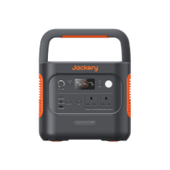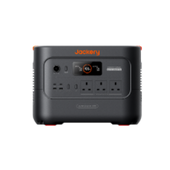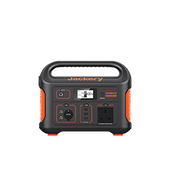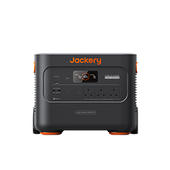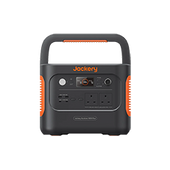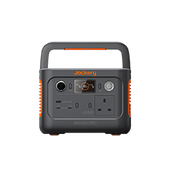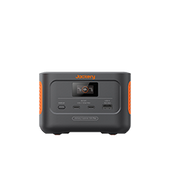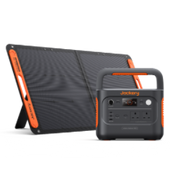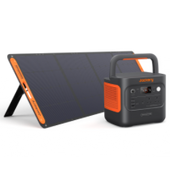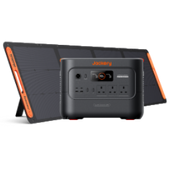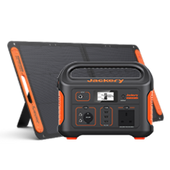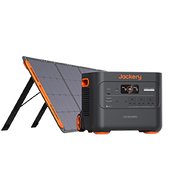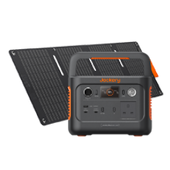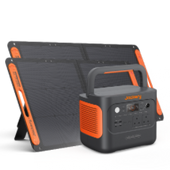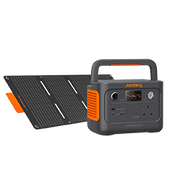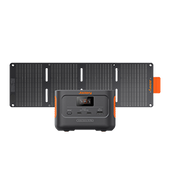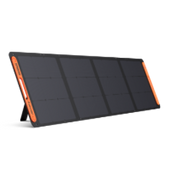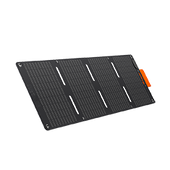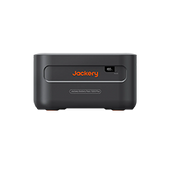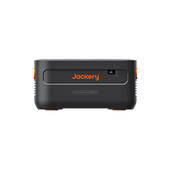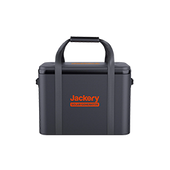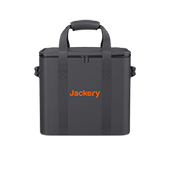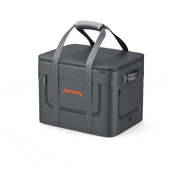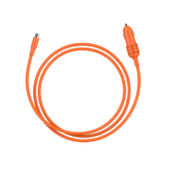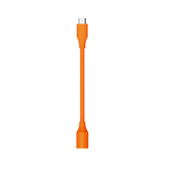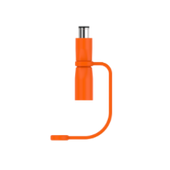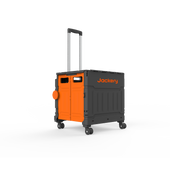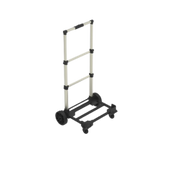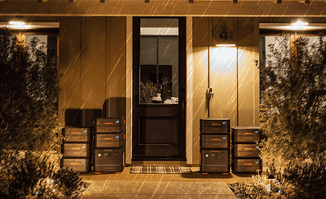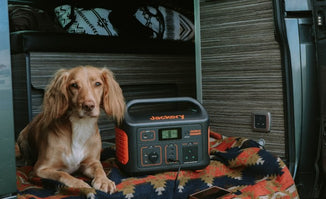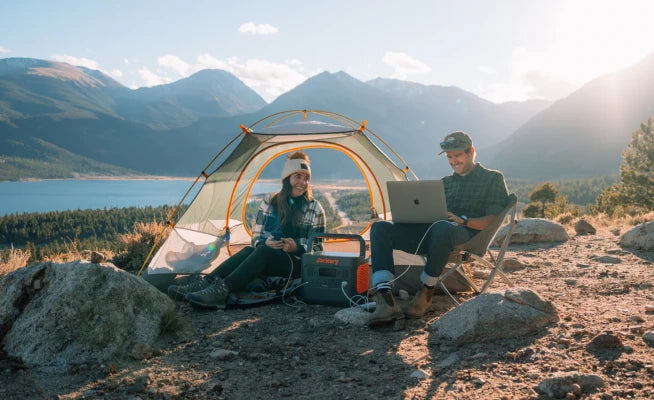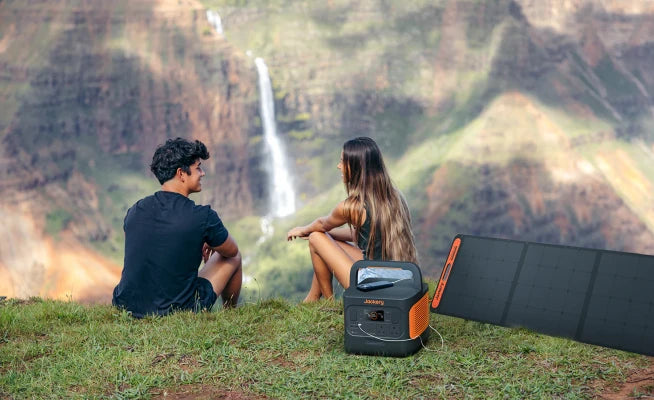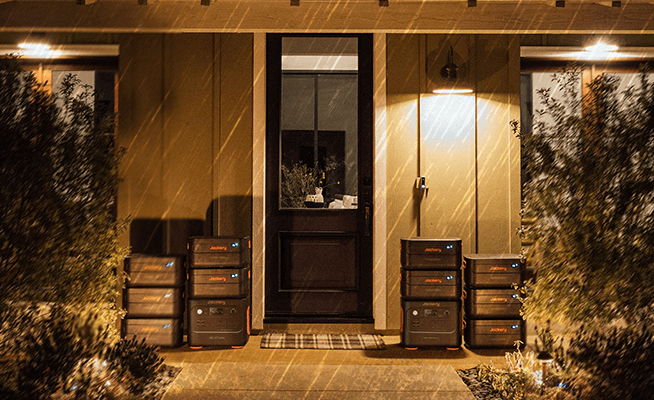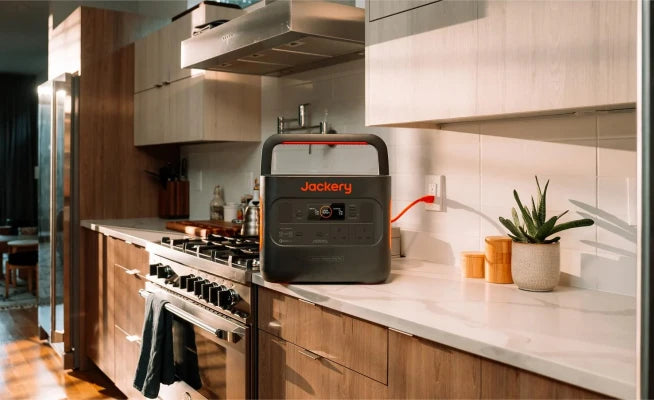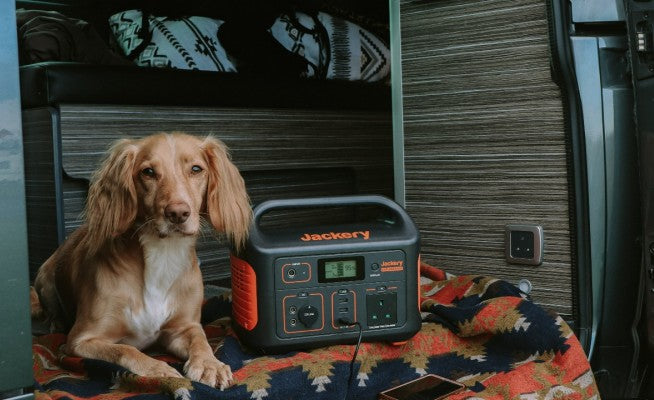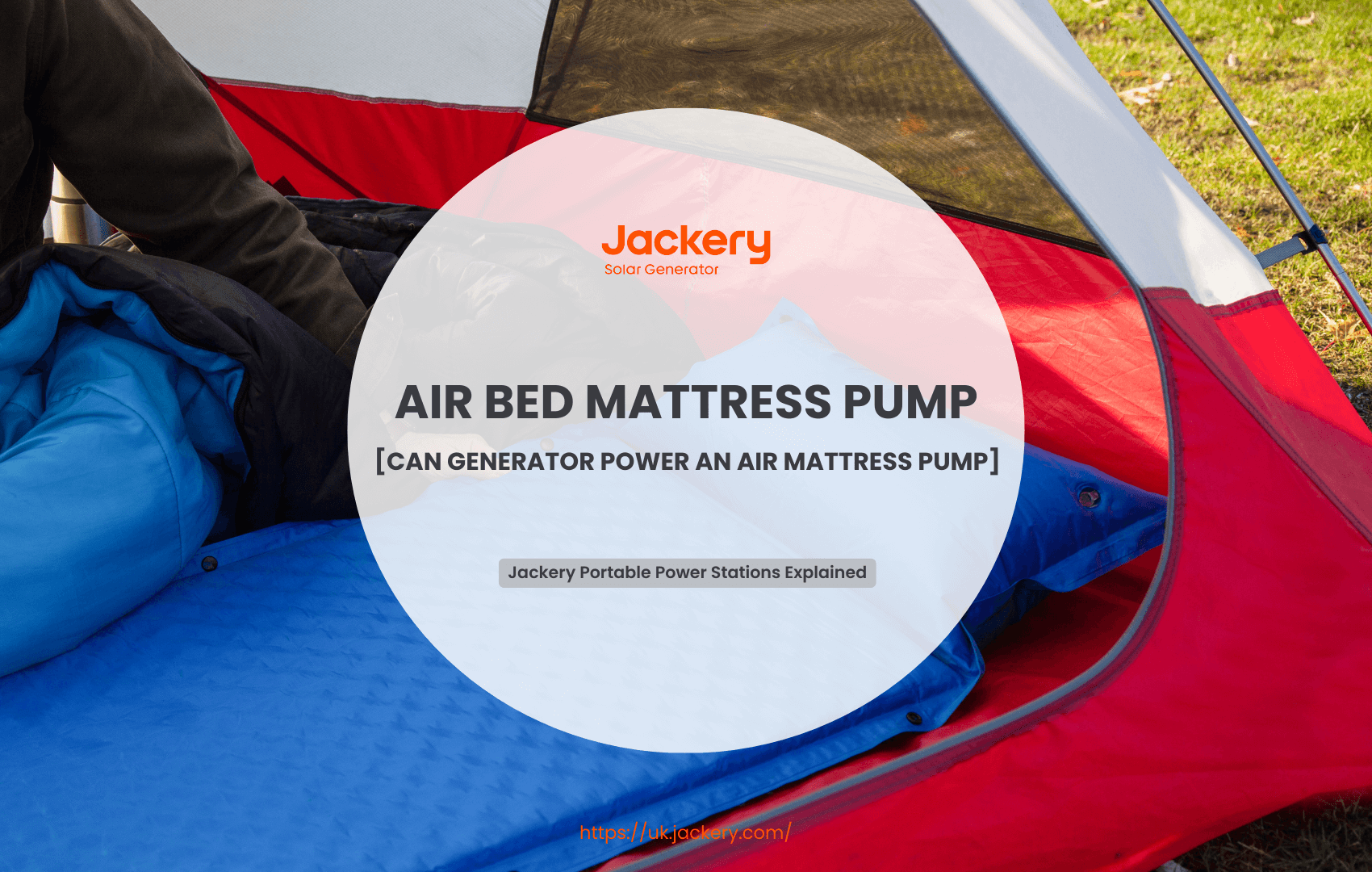An air bed mattress pump is essential for anybody who uses inflatable mattresses, whether for camping, visitors, or vacation. These pumps simplify inflation and deflation, saving both time and energy. With the right pump, air beds make it easy to sleep in different ways and customise your comfort.
Pumps come in a range of types, from electric to manual, and they differ in how easy they are to move, how much power they use, and how well they work with different inflatables. You can make an educated choice if you know how they work, how much energy they use, and which models are best for your requirements.
This article provides an in-depth look at air mattress pumps, including how to use them, power them outdoors with the Jackery Portable Power Station, and offers expert tips for achieving the best long-term performance.
|
Key Takeaways: |
|
How Does an Air Bed Mattress Work?
Air mattresses are helpful when you require a flexible and portable sleeping solution. They may be inflated manually or electrically, allowing you to customise the mattress to your preferred level of comfort. In this piece, we'll look at the many kinds of air mattresses available on the market and explain how they function.
Whether camping outdoors or having unexpected company at home, air mattresses provide a comfortable sleeping surface without breaking the bank. From basic inflatable models to elaborate airbeds with built-in pumps and adjustable firmness settings, there is an air mattress to suit every taste and budget.
The workings of an air mattress are simple: air is pumped into the mattress, which then supports the sleeper's weight. The stiffness may then be changed by introducing or releasing some air. Some air mattresses use novel technology like internal coils, foam cushioning, and multi-layered construction to provide even more support and comfort.
When an air mattress is filled, it forms a layer of air cushions between the user and the floor. The quantity of air pushed into the mattress influences its level of firmness. More air means more firmness, whilst less air means a softer mattress.
The mechanics of an air mattress are based on something called air pressure. Air pressure is the force exerted by air molecules on a surface. When air is poured into the mattress, the pressure rises. This increase in pressure causes tension, making the mattress stiffer and capable of supporting a person's weight.
The valve linked to the mattress plays a vital role in its operation. It regulates the airflow into and out of the mattress. When the valve is closed, the air pressure within the mattress is kept constant, and the mattress stays firm. When the valve is opened, air escapes the mattress, lowering the air pressure and softening it.
How Does an Air Bed Mattress Pump Work?
Air mattress pumps, whether electric or manual, function by pushing air into the mattress to expand it or taking air out to contract it. Electric pumps often feature an on/off switch, as well as separate outputs or settings for inflating and deflating. Manual pumps, such as foot pumps, employ a bellows mechanism to push air into the mattress.
Understanding Air Bed Mattress Pump
The best air bed mattress pumps are small devices that can inflate and deflate items like air beds, inflatable boats, and bike tires. They are great for inflating things on the go since they are easy to move about. This makes them a good choice for both outdoor enthusiasts and everyday people.
Air bed mattress pumps have a broad variety of uses, including camping, bicycling, water sports, and emergencies. Their adaptability makes them indispensable for anybody who needs a fast and effective method to inflate or deflate goods while on the go. The advantages of possessing a portable air pump are many.
These include the capacity to inflate goods in distant areas, convenience in emergencies, and the flexibility to utilise a single device for several applications. Furthermore, portable air pumps save time and effort over manual inflation techniques.

Key Considerations When Selecting a Portable Air Pump
Portability and Dimensions
When buying a portable air pump, size and weight are crucial factors to consider. A really portable pump should be compact and lightweight, allowing for easy mobility during outdoor activities.
Power Sources: Rechargeable vs. Battery-Powered
It's important to know where the power comes from. Rechargeable pumps are suitable for the environment and save money in the long run, while battery-powered pumps give you power right away without needing to be recharged. Consider how you use things and what you like when making this choice.
Pressure and Pumping Capability
Different inflatables demand varied amounts of pressure. A decent portable air pump should have changeable pressure settings to meet the demands of a variety of things, including high-pressure inflatable SUPs and low-pressure air mattresses.
Flexibility and Adaptability to Different Inflatables
Choose a pump that is adaptable and works with a variety of inflatables. A multipurpose pump increases the value of your investment in camping goods, air beds, or boats.
Are Air Mattress Pumps Universal?
Air mattress pumps are not generally compatible with all air mattresses since the valves and inflation processes utilised in each vary. However, many air mattress pumps have several nozzle adapters to fit various valve types and sizes, making them more adaptable.
When selecting an air mattress pump, it is essential to consider the valve type on your air mattress and ensure that the pump is suitable. The two primary kinds of air mattress valves are Boston valves and twist valves. Boston valves are the most prevalent kind of valve and are usually seen on bigger air mattresses. Twist valves are small and often found on smaller air mattresses and pool floats.
If you're searching for a universal pump, there are many alternatives. One alternative is to choose a pump with many adapters. Another approach is to use a pump that has a universal valve connection. Universal valve attachments may be bought separately and used with most air mattress pumps.
How to Blow Up an Air Bed Mattress Using a Pump?
Using a pump is the simplest and convenient way to fill your air mattress. Here's how:

Step 1: Release the Valve Cover
Most air mattresses include a one-way air valve (which enables air to enter but not exit) or a simple hole on the side of the mattress. Locate the lid and remove the protective cap.
Some new air mattresses have built-in pumps on the sides. If your mattress has a built-in pump, you will likely not need to open the valve cover.
Step 2: Place an Air Pump into the Valve
Most air mattresses have an electric pump, but you may also use a hand or foot pump. Insert the pump nozzle into the hole or valve opening. Push the pump firmly into the hole, creating a tight seal with the material around the valve. If it doesn't, air may leak around the pump, making it difficult to inflate the mattress properly.
If your pump does not form a tight seal around the valve, try wrapping duct tape around the pump nozzle until it is securely seated in the valve.
Step 3: Use an Electric Pump to Fill the Air Mattress
Plug in the electric air pump or ensure it has battery power before turning it on. The mattress will instantly start to expand. Continue running it until the mattress feels firm but yields slightly when you put weight on it.
Inflation time: 3-5 minutes if plugged in; 5-10 minutes if battery-powered.
Electric pumps are often fairly noisy, so avoid operating them near where people sleep.
Be cautious not to overinflate the air mattress, since this increases the likelihood of leaks. If the mattress is firm and doesn't flex when you lie down, try letting some air out.
Step 4: Reattach the Valve Cover
Once the mattress is completely inflated and firm to the touch, remove the pump and screw the valve or hole cap back on to keep the air within. Grab some sheets, blankets and pillows to create your bed and prepare to go to sleep!
Air mattresses with one-way valves automatically retain air within, but screwing the lid back on adds an extra layer of protection against deflation. Mattresses with simple air holes and no valves will begin to deflate as soon as the pump is unplugged; therefore, replace the cap as quickly as possible.
How Many Watts Does an Air Bed Mattress Pump Use?
So, how many watts does the pump for your air mattress need? There are several reasons why it's essential to know how much electricity an air mattress pump uses.

First, it checks to see whether your current power source can handle the load. Most air mattress pumps require between 100 and 200 watts of electricity, while some high-powered ones may use up to 400 watts.
Second, understanding power usage enables you to predict operational costs. For example, if you run the pump for an hour and it uses 150 watts, it will cost you about 1.5 kilowatt-hours.
Finally, knowing the power consumption enables you to choose an appropriate power generator or battery pack if you want to utilise the air mattress pump in distant areas. This, in turn, allows you to determine the wattage consumed by an air mattress pump.
Factors Affecting Energy Usage of Air Bed Mattress Pumps
One issue that influences the energy consumption of air mattress pumps is the kind of power source used. Here are five variables that might influence the energy consumption of air mattress pumps:
Pump Size: Larger pumps often use more energy than smaller ones.
Inflation Speed: Higher inflation rates may require more electricity usage.
Air Pressure: Pumps with greater air pressure may require more energy.
Pump Efficiency: More efficient pumps may need less energy to get the same results.
Additional Features: Pumps with built-in features such as auto-shutoff or pressure sensors may use more energy owing to their increased functionality.
When selecting an air mattress pump, consider the following criteria to ensure it meets your needs while using the least amount of energy.
How Many Watts Does an Air Bed Mattress Pump Use?
When choosing the wattage for your air mattress pump, you must consider the pump's power needs. To calculate the watts, you must first determine the pump's voltage and amperage.
Most of the time, the pump or the product manual will tell you what the voltage is. To find out how many amps something has, divide the watts by the volts. If the pump has a voltage of 120V and a power of 60W, the amperage will be 0.5A. To get the watts, multiply the amperage by the voltage. The wattage in this case would be 60 W.
It's essential to keep in mind that the wattage may change depending on the kind and brand of pump, so be sure to check the product information before you buy.
What Are Energy-Efficient Air Bed Mattress Pump Options?
We're looking for a more effective way to inflate your air mattress. Consider these energy-efficient pump alternatives!
Wattage is an essential factor to consider when selecting an air mattress pump since it has a direct impact on energy usage. Choosing an energy-efficient pump can help you save money on power and reduce your carbon footprint.
One alternative is a rechargeable pump, which removes the need for a continuous power source and allows for portability. These pumps often demand less energy and are ideal for outdoor activities or camping excursions.
Another choice is a pump with customisable settings, which allows you to customise the airflow while reducing power use. These pumps are designed to fill your air mattress rapidly and effectively while conserving electricity.
With these energy-saving pump alternatives, you can relax knowing you're saving money while still being ecologically responsible. Furthermore, it specifies how many watts an air mattress pump consumes.
Tips for Minimising the Power Consumption of Your Air Bed Mattress Pump
To reduce power usage, try changing your mattress pump's airflow. Reduce the airflow to conserve energy without sacrificing the effectiveness of your air mattress. Here are three easy strategies to help you reduce your electricity consumption:
Choose the lowest setting: Most air mattress pumps have many airflow settings. Select the lowest level to save energy. Inflating your mattress may take longer, but the energy savings are worthwhile.
Partially inflate before bed: Instead of completely inflating your mattress before bedtime, let it grow overnight. In this manner, you may save energy by not using the pump for an extended period.
Keep your pump maintained regularly: Keep your air mattress pump clean and well-maintained for peak performance and minimal energy waste. Periodically check for obstructions or blockages to avoid overworking the pump.

Can a Generator Power an Air Mattress Pump?
Yes, you can absolutely use a Jackery Portable Power Station to power an air bed mattress pump. In fact, it's one of the most common and practical uses for these power stations, especially for camping and car camping. Air mattress pumps typically have a low power draw, usually in the range of 100-150 watts (W). This is well within the continuous output capacity of even the smallest Jackery models.
A Jackery provides a stable and reliable power source, allowing the air pump to work at its full speed and efficiency. This means your mattress will inflate quickly, allowing you to relax without the hassle of a manual foot pump or a finicky car inverter. Unlike a noisy and fume-producing gas generator, a Jackery is virtually silent and produces no emissions. This is a massive advantage for camping, where you want to enjoy the peace of nature.
For powering the air mattress pump and other appliances, we highly recommend the Jackery Explorer 1000 v2 or 2000 v2, whether you are camping, on a beach picnic, or elsewhere.
|
|
Jackery Explorer 1000 v2 |
Jackery Explorer 2000 v2 |
|
Standard Electric Pump (100-150W) |
5.3-7.6H |
10.9-16.3H |
|
Large Electric Pump (400W) |
2.1H |
4.1H |
|
Portable Fridge (60W) |
11.7H |
27.2H |
|
Coffee Maker (550W) |
1.6H |
3H |
|
Electric Kettle (600W) |
1.4H |
2.7H |
Jackery Explorer 1000 v2
The Jackery Explorer 1000 v2 is an excellent choice for powering an air mattress pump and other appliances, striking a balance between power, portability, and features.

1500W Continuous Power: The Explorer 1000 v2 provides a continuous output of 1500W and a peak/surge output of 3000W. This is more than enough to handle a typical air mattress pump, which usually requires only 100-120 watts. This wattage also allows you to power a wide range of other appliances, such as a microwave, coffee maker, mini-fridge, or power tools.
1070Wh Capacity: With its 1070Wh battery, the Explorer 1000 v2 can run an air mattress pump for a very long time, likely for hundreds of inflations. This capacity is also sufficient to keep essential devices running for extended periods, such as powering a small refrigerator for about 12 hours or a TV for over 8 hours.
Lighter and More Compact: At around 23.8 lbs (10.8kg), the Explorer 1000 v2 is significantly lighter than its larger counterpart, the Explorer 2000 v2. This makes it easier to carry on camping trips, to a tailgate party, or simply around the house during a power outage.
Fast Charging: The Explorer 1000 v2 can be charged from 0% to 100% in as little as 1 hour using the "Emergency Super Charge" mode with an AC outlet. It also supports fast solar charging, allowing you to quickly top off the battery when you're off-grid.
Multiple Charging Options: You can recharge the unit from a standard AC wall outlet, a car adapter, or with Jackery SolarSaga 200W or 100W solar panels. This versatility ensures you can keep the power station ready to go, no matter where you are.
Jackery Explorer 2000 v2
The Jackery Explorer 2000 v2 is a powerful and versatile portable power station, and there are several compelling reasons to choose it for powering an air mattress pump and other appliances.

High Wattage Output: The Jackery Explorer 2000 v2 provides a continuous power output of 2200W with a peak/surge output of 4400W. An air mattress pump typically uses a relatively low amount of power (e.g., 100-120 watts), so the Explorer 2000 v2 can handle it effortlessly. Its high wattage capacity also allows you to power more demanding appliances like a microwave, coffee maker, refrigerator, or even some power tools.
Large Capacity: With a 2042Wh (watt-hour) capacity, the unit stores a significant amount of energy. This means it can inflate an air mattress multiple times without a problem, and also keep other essential devices running for extended periods. For example, it can run a refrigerator (400W) for about 4 hours or a TV (100W) for over 14 hours.
Multiple Ports: The Explorer 2000 v2 features numerous output ports, including three AC pure sine wave outlets, one DC vehicle connector, and numerous USB-A and USB-C connections. This lets you charge many devices at once, including your air mattress pump, phone, laptop, and other small gadgets.
Pure Sine Wave Inverter: Pure sine wave AC outlets are essential for sensitive devices because they give a clean and reliable power output that is equivalent to a regular wall outlet. This is a massive benefit over power stations that use a modified sine wave, which may harm or shorten the life of some electronics.
LiFePO4 Battery: The power station uses a LiFePO4 (lithium iron phosphate) battery, which is known for its long lifespan and safety. This battery chemistry is more stable than other types of lithium-ion batteries and can be charged and discharged thousands of times before its capacity begins to diminish. Jackery states the battery has a life cycle of 4000 cycles to 70%+ capacity.
How to Get the Best Night's Sleep on an Air Bed?
Always test your mattress at home several days before you go. Pump it up, check for leaks, and rehearse deflating and rolling—you'll thank yourself on the job, particularly if it's rainy and you have a headlamp.
Layer a foam pad or old yoga mat beneath your airbed for colder evenings (even in the summer in the Peaks). Air alone insulates poorly; a groundsheet plus anything frothy transforms a cold night into a warm one.
Always include a repair kit in your luggage, including adhesive patches, valve spares, and sometimes even duct tape. If you're not lucky, a pointed chunk of gorse or a rough tent floor can pierce any mattress.
Keeping an Air Mattress Inflated All Night
Right before you go to sleep, make sure the air mattress is refilled. At the beginning of your usage of an air mattress, the material will expand, and it may lose part of its firmness. It is essential to check the air mattress before you lie down on it, and if it does not feel firm enough, you should inflate it once more. After two to three uses, air mattresses typically undergo a complete stretching process.
Prevent the mattress from being overloaded with weight. The maximum weight that an air mattress can support is specified, and exceeding that limit may result in the mattress losing air. Ensure you do not exceed the weight restriction of the air mattress you are using. This will ensure that your bed remains inflated during the whole night.
Make repairs to any holes or leaks that you discover. There may be a leak in your air mattress if it gradually loses air capacity over the night. While the mattress is being inflated, moisten the surface with soapy water and watch for bubbles that are developing. This can help you locate the source of the leak. Your mattress should be deflated, and then a repair kit should be used to cover the hole. Before re-inflating the mattress, wait for the patch to dry for the time specified on the container.
To get you through the night, you may use duct tape, hot glue, or super glue to patch the hole. These are all excellent temporary repairs that will get you through the night. To locate the leak again during repairs, label it with a marker.
Deflating an Air Mattress
The following are the steps of deflating an air bed mattress:
Step 1: Take off the Valve Cover Screws.
If you are finished sleeping on your air mattress and want to put it away for storage, you will need to detach the cover that covers the air hole. If your mattress has a single air hole, it will start to lose air pressure very quickly. However, air mattresses with valves that allow only one direction of movement may require more effort from you. If you find that your mattress does not begin to deflate right away, you might try one of the following suggestions:
Check for a switch that allows air to be released.
It is possible to allow air out of the valve by turning a device that releases air.
Using the screwdriver, remove the valve from its housing.
Step 2: Fold or Roll the Mattress to Let Air Out.
As air escapes from your mattress, it will ultimately reach a mostly deflated condition. To release all of the air, begin folding or rolling the mattress from the end opposite the air hole. When fully deflated, fold the mattress towards the hole to take up as little space as possible.
To press all of the air out of the mattress, try forming tiny, tight folds or rolls, similar to how you would force toothpaste out of a tube.
Step 3: Vacuuming May Save Your Time.
If you want to speed up the deflating process, consider using a vacuum to remove air from the mattress swiftly. For this reason, you may use a standard household vacuum, a shop vacuum, or any other equipment capable of creating suction. Open the air hole, wait for the air to start leaving the mattress and then hold the hoover hose or nozzle over the hole to accelerate the deflation.
FAQs
The following are frequently asked questions about the air bed mattress pumps.
1. Can you use any air pump for an air mattress?
It is probably doable, but it will take a very long time. That specific bike pump will not function owing to the limited air flow; it is only designed to pump tiny tubes. You need a larger all-in-one air pump, or you can buy a specialised air mattress blower that attaches to your vehicle for $10.
2. Do all air mattresses have the same pump?
Some air mattresses come with a manual hand pump or a portable AC electric pump, while others require an additional purchase. Many double-height air mattresses have built-in pumps. If you're camping, you'll need a battery-powered or manual hand pump.
3. Can I fill an air mattress with a hand pump?
A manual air pump, whether hand or foot-operated, is an excellent choice when power is unavailable. Rather than being plugged in, these pumps demand a modest amount of human effort to inflate the bed. All you need to do is find the valve, connect the pump, and begin the inflation process.
4. What can I use instead of an air mattress pump?
Set a hair dryer to the cold setting and use it to fill an air mattress. Quick and straightforward.
5. Can you inflate an air mattress with a hair dryer?
Yes, it is feasible. However, never use the hot setting since it will melt the mattress material.
Final Thoughts
Air bed mattress pumps are vital equipment for convenience, comfort, and efficiency. You can make an educated purchasing decision if you understand how pumps function, the many kinds of air mattresses available, and the elements that influence performance. Whether you want a lightweight manual pump for camping or an energy-efficient electric pump for your home, selecting the appropriate pump ensures long-term reliability.
Consider the mobility, power consumption, and compatibility of your mattress valves. Maintaining comfort is simple with the right pump, whether you're inflating for overnight guests or preparing for an outdoor adventure. Investing in a quality pump guarantees hassle-free use and a better night's sleep.


